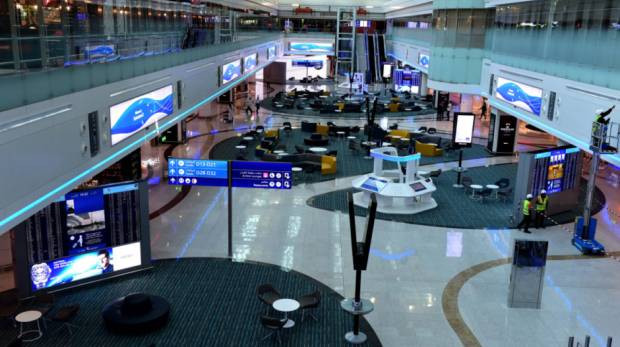There was then a panel session moderated by Florian Rotberg of Invidis. The panel consisted of Mike MacMillan of Vizualize, Damian Rodgett of Pilot Screentime in Germany, Sascha Martini of razorfish and Stewart Caddick from Connectiv and Retail Concepts Design.

Rodgett said we are confusing a lot of people by using the phrase, digital signage, and he said we should try not to use it. It’s better, he said, to say point of sale (POS) or point of information (POI). Digital signage is just part of the solution, the full answer is about marketing and key performance indicators (KPIs). It’s also about emotional engagement with the buyer. Nobody buys because of the display, Rodgett said. Getting a consumer to buy is a journey that could take days, months or years. The “wow factor” of big displays is great, but the key objective is to provide relevant information.
Now you can track from home to the point of sale. MacMillan said that there can be too much data; staff should focus on sales, not metrics. Martini said that infrastructures can be ‘siloed’ and that makes it hard to access it in a seamless and integrated way. Stores often work with a flagship store first e.g. Audi City, then rolling out to other showrooms. He said he has “five or six” prototype projects developing different use cases.
A robot has been developed that can recognise not only micro emotions, but also accents. The robots can hear a german accent and switch to german, automatically. If it hears people speaking in Korean, it can switch to that language.
The new Dubai T4 terminal has 50% more screens than 2012 concourse, but it may have too many. In the third concourse, most visitors are just changing planes so the purpose of so many displays might be just to stop people walking in the retail zone. In Concourse D, 95% of the people in the terminal are leaving Dubai, so you have to catch them very quickly. Once they head to the gate, they are lost to those that want to sell them something. There are separate airport networks with JCDecaux having one, while the other is the official airport network. That means competition between different display owners and in the future, it may need better coordination to get the best results. If you are in Dubai and have time, check Concourse 4 was the recommendation.
 Dubai Concourse D has, perhaps, too many displays! Image: Gulf News
Dubai Concourse D has, perhaps, too many displays! Image: Gulf News
Digital can be a challenge because digital signage installations typically have 20 times the cost of analogue in the short term. That’s a problem because retailers think in terms of one to two years for most initiactives, but RFPs are often five years for digital. It can be hard to target content in airports – planes arrive from Shanghai and Houston at the same moment and they may have very different demographics.
Privacy remains a big issue globally, but especially tough in Europe and Germany. There are lots of opportunities. For example, if you can detect clothing you can analyse how buyers present themselves, so you may be able to tell if they are part of a group. People are increasingly becoming “Zombies” on their phones. The phrase “phone bees” has been used. Apparently, Wrigleys has said that the phone killed chewing gum impulse buying as people at a checkout look at their smartphones, rather than buying things! Using sound to catch attention is one option.
Lighting control can be a big issue and the Asian sensitivity to various light levels is different. Overnight flights arrive in Dubai and if you want to get people to buy, you have to wake them up with brighter lights! Relative lighting levels high, but contrast needs to be maintained.
Loyalty cards may disappear if you can recognise the user automatically. Bluetooth usage is very small at the moment. Beacons can be meshed and increasingly used for two way communication and you can track accurately however, there might 100 million beacons worldwide in three years. If users get better experiences and services from new technologies, they will adopt them. Asia often drives new technologies now and there are 750m wechat users already so Asia probably will adopt Bluetooth faster.
There was some discussion of the privacy industry and MacMillan repeated what he had said. Data doesn’t need to be recorded if you trust it, he said, and that eases concerns about staff and customer privacy.
Profiling is well understood in the web and online worlds and you may be able to do the same in a few years in retail. Big data needs to give you real insights otherwise it’s not useful.

